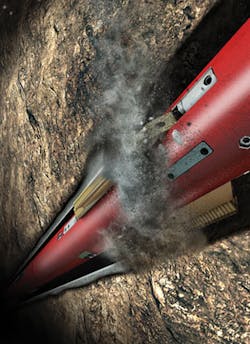Dual-string section mill facilitates P&A
Hydrocarbon migration in a well that has been plugged and abandoned poses a real danger to asset integrity and the environment. The most effective way to prevent this is by employing a plug and abandonment (P&A) procedure that achieves a rock-to-rock, cement-to-formation bond. The Weatherford Endura dual-string section mill (DSSM) accomplishes this with the use of specially designed blades and stabilizers that enable through-casing milling of the adjacent string of casing to access the borehole quickly and efficiently. Separate milling and stabilizer blades provide two points of stabilization while creating finer, more manageable cuttings.
First, the DSSM mills the inner casing to provide access to the outer casing. On the next trip, the DSSM passes through the inner string and the cutting blades expand to remove the outer casing, thereby creating a casing-exit window. The remainder of the casing is removed in a third run with the DSSM using 17-in.-long milling blades. By completely removing all casing to expose the formation, the milling run prepares wellbores for permanent rock-to-rock cement plugging.
This hydraulic seal mimics natural bedding, mitigates gas migration, and can be confirmed with a pressure test. The DSSM produces substantial rig-time savings in offshore environments and results in a stable, permanent, and verifiable seal, fulfilling some of the most stringent regulatory requirements for offshore well abandonment.


